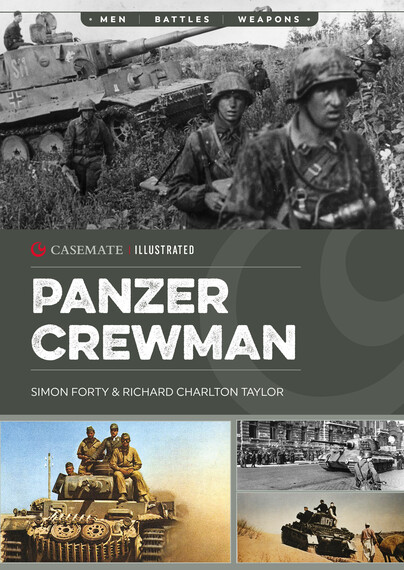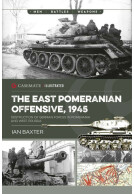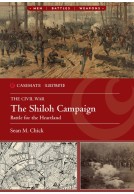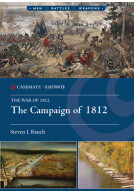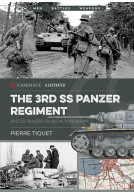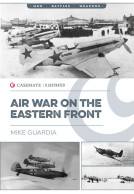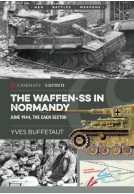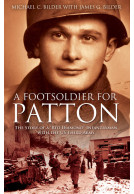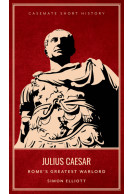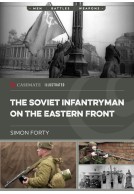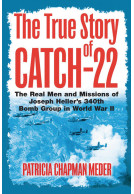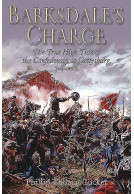Panzer Crewman (Paperback)
Series: Casemate Illustrated
Pages: 128
Illustrations: 150 photos
ISBN: 9781636244600
Published: 17th January 2025
(click here for international delivery rates)
Order within the next 7 hours, 59 minutes to get your order processed the next working day!
Need a currency converter? Check XE.com for live rates
A fully illustrated introduction to the role, and experience, of the Panzer crewman.
The German Panzerwaffe ripped up the rulebooks of war that had been laid down by the grinding slaughter of the trenches of World War I. Armored vehicles, close-air support, and bold leadership based on mission command, Auftragstaktik, cut a deadly swathe through the armies of east and west Europe. The Panzers made a significant contribution to Nazi successes; they remained steadfast in defense as their conquests slipped away their grasp from the apogee at Stalingrad and El Alamein in late 1942, through the long years of retreat to final defeat. Attrition and overwhelming odds blunted the opportunities for advances, but with increasingly powerful weaponry, the Panzerwaffe stiffened the German defensive backbone right to the end.
Part of the reason for these successes was undoubtedly the Panzers themselves, but it wasn’t just the weapons that led to the Panzers’ successes—it was the way they were handled. A weapon is only as good as those who use it and the Panzertruppen—from higher command down to individual crew members—proved themselves to be very good at using their weapons. Not just the men who fought in the tanks but those who maintained them and kept them in the field, recovered and rebuilt the casualties, and dealt with the over-complexity of design and the huge variety of types of tank, weapon and ammunition. Selection and training standards—so good in the early war years—may have dropped off as wartime exigencies bit deep, but from 1939 to 1945 German Panzer crew were second to none. This Casemate Illustrated provides a full introduction to the role, and experience, of the Panzer crewman.
This one starts with a 4-page timeline of events, starting from the formation of the Karma Tank Training school in the Soviet Union in 1929, and goes through to the final Tiger being knocked out in Berlin in the May of 1945. Then we get into the detail, beginning with a look at Panzer production over the years, the various types over the years and so on. Then we get to the Tank Soldier, their training, their uniforms, their awards and decorations. We move on to The Units, the Panzer organisation, the unit numbering and markings. It includes the establishments of the Panzer divisions and the heavy tank battalions. The Panzers themselves are all covered, from the Pz I, II, III and IV, the 38(t), the Panther and Tigers. This includes a particular look at the Schachtellaufwerk, the interleaved roadwheels seen on both the Panther and Tiger variants. More specialised equipment featured include Funklenkpanzer (radio-controlled tanks), Beutepanzer (captured tanks), bridgelayers, recovery tanks, AA tanks, as well as covering ammunition, stowage, radios, crew duties and positions in the different panzers and even camouflage. It moves on to explain mobility, traffic control, river crossings, tank maintenance in WW2, plus a look at the specialised track links of the Winterketten and Ostketten track links. Additional coverage deals with the tactics employed by the German panzer forces, the use of command tanks and how tanks were used in both attack and withdrawal phases and closing with notes on life in the field for a panzer crewman and all rounded off with a conclusion. The book is heavily illustrated throughout, with some excellent artwork as well as plenty of detail on show in the archive photos that have been selected for the book.
Military Model Scene
This makes for useful reminder that whatever quality a tank may have, it is still dependent on an equally good crew to get the best from it. Over the years, and with combat experience, German tank crews in WW2 were the vital part of the effectiveness of the panzers throughout the war, in times of both success and even failure. The tanks themselves improved a great deal between the Panzer 1 of 1939 and the large Tiger II of 1945. For the tank enthusiast, and for the armour modeller in particular, this is a very handy reference, with a lot of detail included all within the one book. In addition to the informative text, useful data tables, good artwork and some well chosen archive photos, I think this is definitely one to have on your reference bookshelf, and good value for money as well.
“Having read plenty of books on various panzers, panzer development, and panzer tactics, I wasn't expecting too much from this title at 128 pages, but it was an interesting read start to finish... Easily recommended, grab a copy today and read for your next build.”
Armorama







